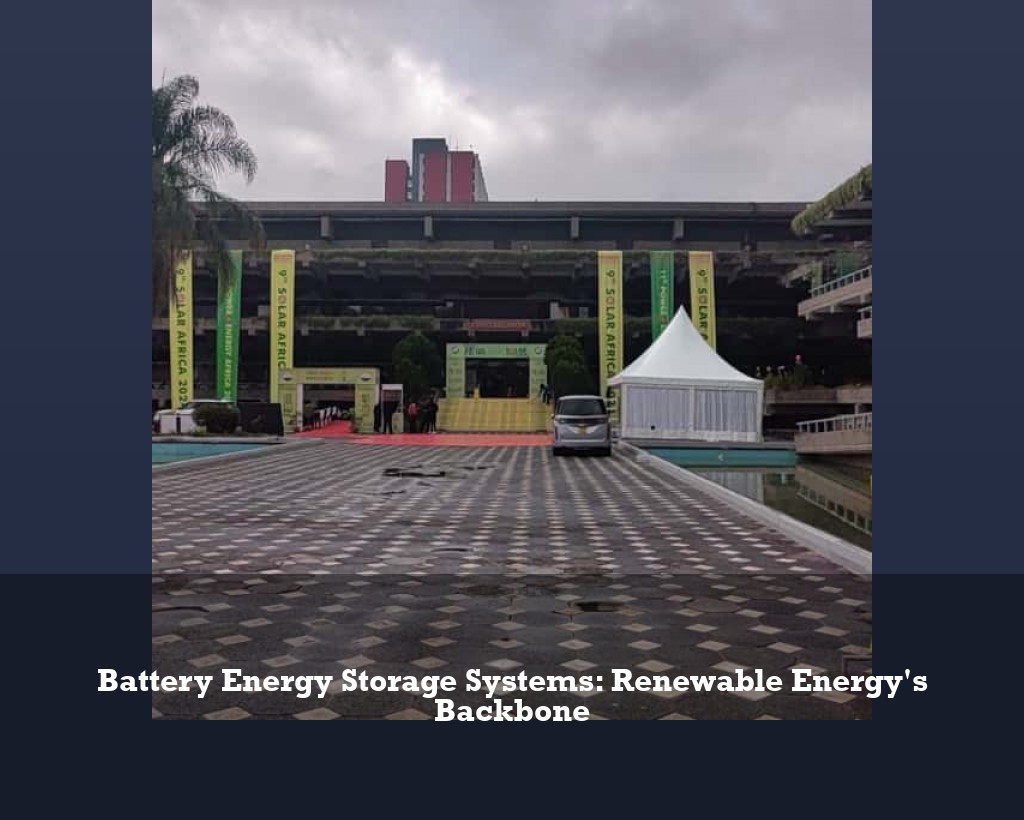Battery Energy Storage Systems: Renewable Energy's Backbone
Imagine a world where solar panels go dark at sunset, wind turbines stand still on calm days, and power grids collapse during peak demand. Sounds like a scene from a dystopian movie, right? Well, that’s exactly the reality we’d face without Battery Energy Storage Systems (BESS). As renewable energy capacity grows—solar and wind now account for 12% of global electricity—the need for reliable storage has never been more urgent.
Battery Energy Storage Systems: Renewable Energy's Backbone

Table of Contents
Why BESS Matters Now
Imagine a world where solar panels go dark at sunset, wind turbines stand still on calm days, and power grids collapse during peak demand. Sounds like a scene from a dystopian movie, right? Well, that’s exactly the reality we’d face without Battery Energy Storage Systems (BESS). As renewable energy capacity grows—solar and wind now account for 12% of global electricity—the need for reliable storage has never been more urgent.
Here’s the kicker: lithium-ion batteries, the backbone of most BESS installations, have seen costs drop by 89% since 2010. But cheaper hardware alone doesn’t solve the puzzle. The real magic lies in intelligent energy management systems that optimize charge-discharge cycles, squeezing out every drop of stored power.
The Brain Behind the Brawn: How BESS Operates
Let’s break it down. A typical BESS isn’t just a giant battery—it’s a symphony of components working in harmony:
- Lithium-ion cells (or alternatives like flow batteries) storing energy
- Power conversion systems flipping between AC/DC currents
- An energy management system (EMS) making split-second decisions
When a Texas wind farm overproduces at 2 AM, the BESS absorbs excess electricity instead of wasting it. Later, during Houston’s sweltering afternoon air conditioning rush, that stored energy flows back into the grid. This dance prevents blackouts and keeps utility bills in check.
From Nordic Pioneers to Desert Innovators
Sweden’s become the unlikely hero in this story. While Germany debates energy policies, Sweden’s deployed 400MW of BESS in 2024 alone—enough to power 160,000 homes during winter blackouts. Their secret? A mix of government incentives and smart grid integration.
But it’s not just about megawatts. Take California’s Moss Landing facility, where 1,200 battery racks balance the grid during wildfire-induced outages. Or consider Japan’s hybrid systems pairing BESS with hydrogen storage—a blueprint for energy-dense regions.
The Grid Stability Tightrope
Now, here’s where things get sticky. While BESS offers grid flexibility, lithium-ion batteries degrade about 2% annually. That means a 10-year-old system might lose 20% capacity—a nightmare for long-term ROI calculations. And let’s not forget the safety dance: a single thermal runaway incident can torch public trust faster than a Tesla battery fire.
Yet innovators aren’t sitting still. Companies like Form Energy are experimenting with iron-air batteries that last 100 hours—perfect for multi-day blackouts. Meanwhile, AI-driven predictive maintenance could slash downtime by 40%, according to recent trials in Australian microgrids.
So where does this leave us? BESS isn’t just another tech trend; it’s the glue holding our renewable future together. From Stockholm’s snow-covered suburbs to Dubai’s solar farms, these silent sentinels of stored energy are rewriting the rules of power management—one charged electron at a time.
Related Contents

Battery Energy Storage Systems (BESS): The Brain Behind Renewable Energy Revolution
Ever wondered why your solar panels stop working at night? Or why wind farms sometimes pay customers to take their excess electricity? The answer lies in energy storage - or rather, the lack of it. As of March 2025, over 30% of renewable energy generated worldwide gets wasted due to inadequate storage solutions. That's enough to power entire cities!

Battery Energy Storage Systems: Powering Renewable Energy Transition
You know how people talk about renewable energy like it's some magic bullet? Well, here's the kicker: solar panels don't work when it's cloudy, and wind turbines stand still on calm days. This intermittency problem costs the global economy $12 billion annually in wasted clean energy - enough to power 15 million homes. That's where battery energy storage systems (BESS) come charging in, quite literally.

Battery Energy Storage Systems: The Brain Behind Renewable Energy Revolution
Let’s cut through the jargon first. A Battery Energy Storage System (BESS) isn’t just a fancy battery pack—it’s the central nervous system of modern renewable energy setups. Imagine your smartphone battery, but scaled up to power factories, neighborhoods, or even entire grids. Unlike traditional power plants that generate electricity on demand, BESS stores excess energy when production exceeds consumption and releases it when needed. Think of it as a giant energy savings account with instant withdrawal capabilities.

Battery Energy Storage Systems: Powering the Renewable Energy Revolution
our renewable energy storage infrastructure is kind of like a leaky bucket. We're pouring in solar and wind power faster than ever (global renewable capacity grew 50% last year alone), but without proper storage, we're losing precious resources. The real kicker? Utilities worldwide wasted enough clean energy in 2024 to power Germany for three months. That's where Battery Energy Storage Systems (BESS) come charging in.

Battery Energy Storage: Renewable Energy's Backbone
Ever wondered why your solar panels stop working at night? That's the $15 billion question the battery energy storage system (BESS) industry aims to solve. As renewable sources generated 30% of global electricity in 2023, their intermittent nature keeps utilities awake at night - literally.
